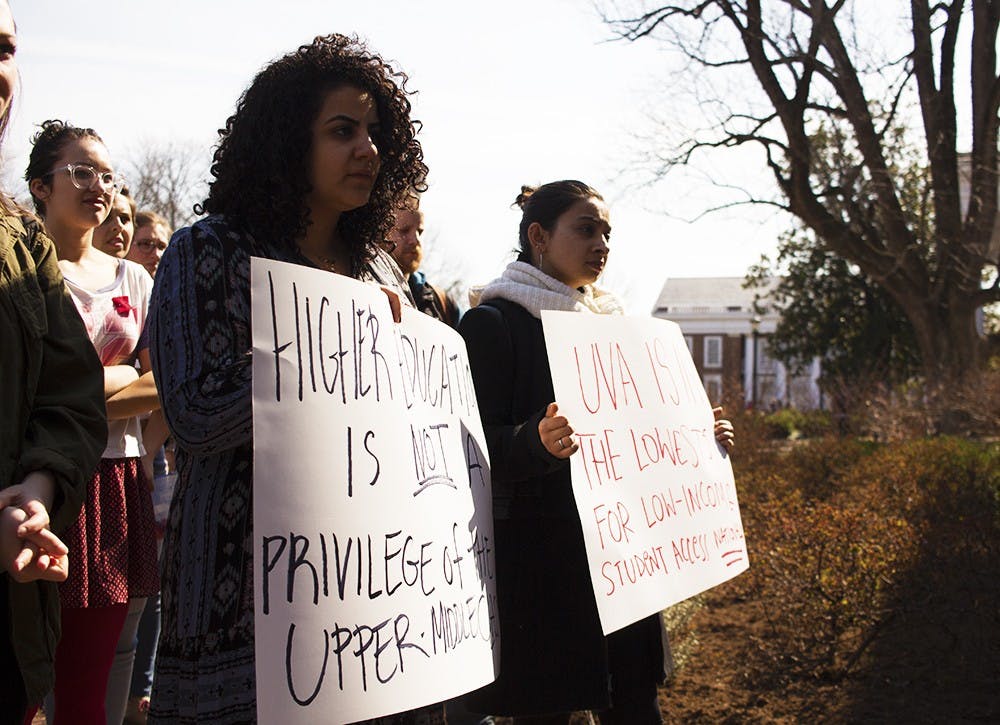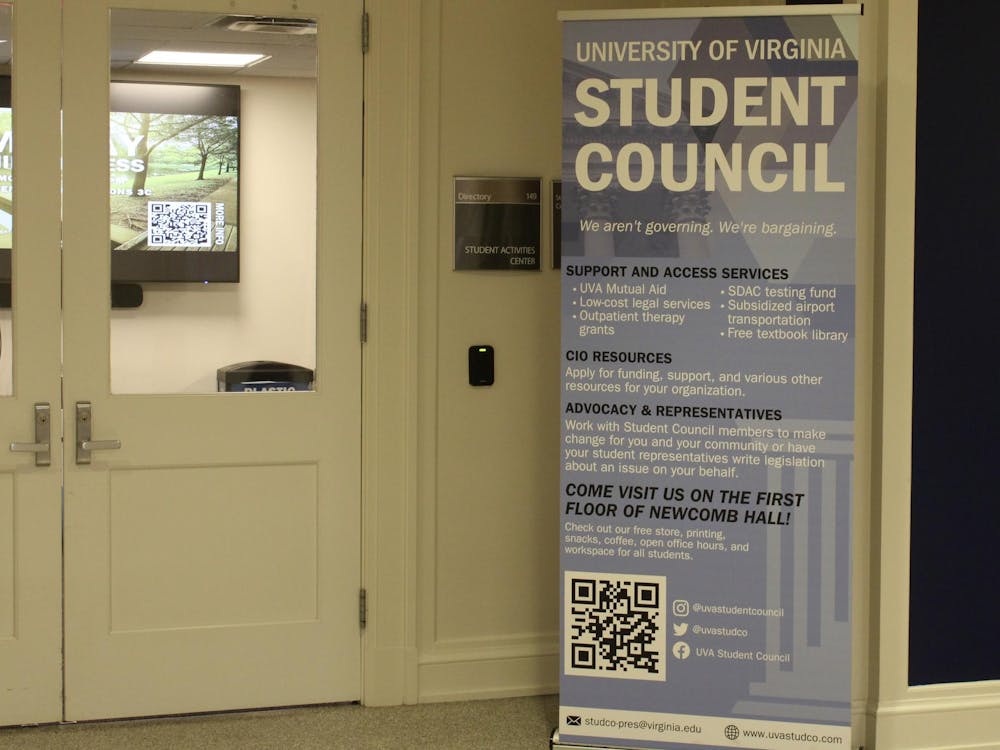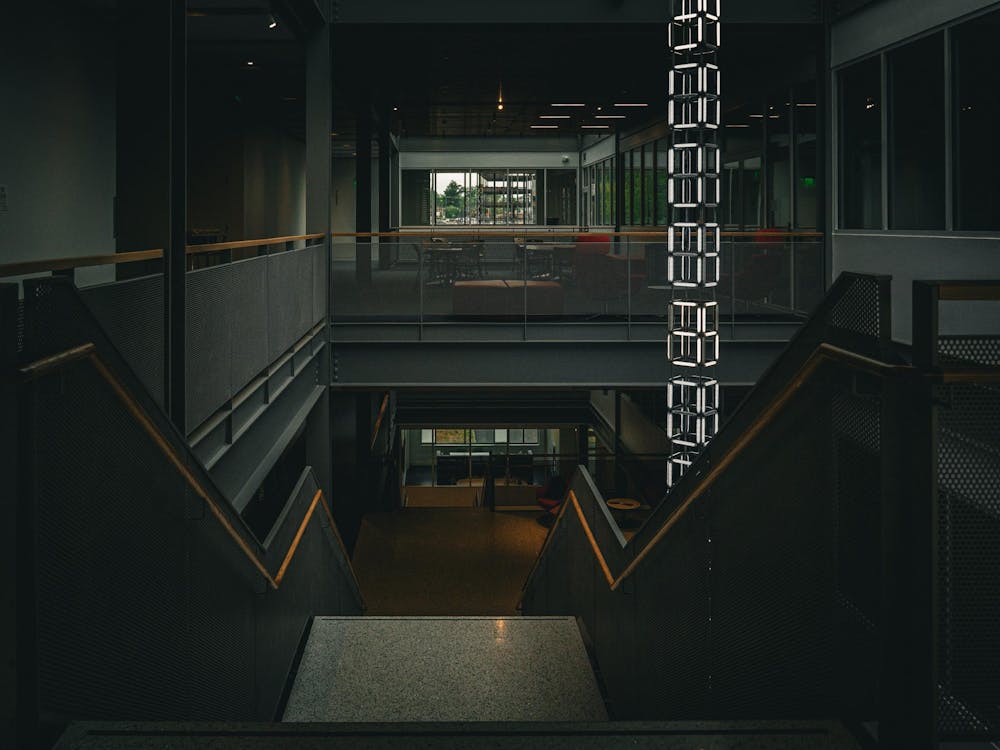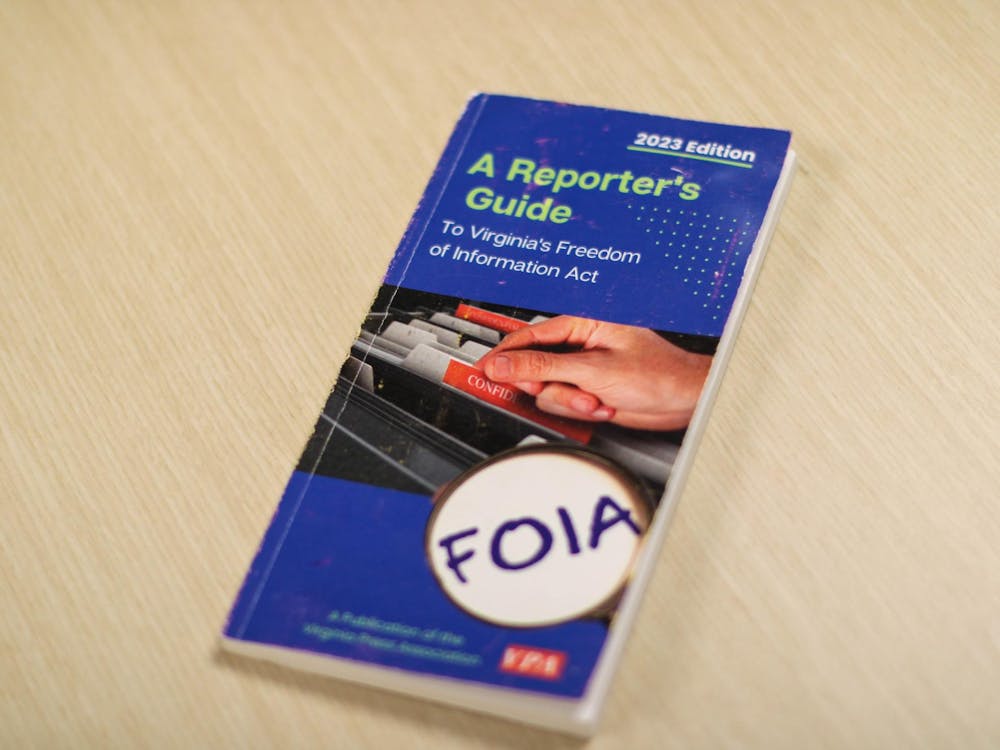Student groups and members of the University community held multiple protests to express discontent with tuition hikes as the Board of Visitors met on Tuesday and Wednesday.
U.Va. Students United and University community members gathered outside of the Special Collections Library Tuesday to protest tuition hikes. The tuition increases were passed in the Board of Visitor’s Finance Committee meeting held in the library’s auditorium.
Event organizer Ibby Han, a second-year College student, discussed the proposed 3.9 percent tuition increase for the upcoming year and the additional $1,000 rate for incoming students — a total 13 percent tuition increase.
According to a statement by U.Va. Students United, it marks one of the largest tuition increases in the nation.
“They say that only high income Virginians are fronting this cost, but it doesn’t make sense that they are charging students more for financial aid which is only necessary because they’ve increased tuition,” Han said.
As the rally progressed downstairs, the protesters were confronted by the Charlottesville Police who prevented protesters from continuing further. However, the protesters held an impromptu question and answer session with University President Teresa Sullivan.
She addressed the protesters and clarified the possible changes to be made in tuition, saying the plan would be cheaper for Virginians in the long run.
“The tuition hike would not apply to out-of-state students, it would not apply to those already on aid [and] it would not start until next year,” Sullivan said. “The policy is it is a reduction of loan burden for low-income students of $4,000 over four years and a reduction of $10,000 debt for middle-income students.”
One protester asked about the implementation of a similar high tuition-high aid system at the University of Michigan, saying that it severely decreased the number of minority and low-income students admitted. The protester expressed concern it would happen at the University with the new tuition increases.
Sullivan said the specific predicament faced by Michigan is not applicable here.
“I was at Michigan, and I can tell you some other things that happened,” Sullivan said. “That had to do with a change in state law having to do with the consideration of race in admission. We are not under that law. We can still consider race as one of many factors.”
The state of Michigan currently bans affirmative action from consideration in admissions decisions in public universities per a law that was upheld by the Supreme Court in April last year. Virginia, however, is not subject to the court’s decision.
Sullivan emphasized the problems in Michigan would not be an issue at the University as no similar policies have been applied.
“The reason I haven’t talked about it is this isn’t an administration proposal,” Sullivan said. “This is a proposal that came from the Board, which is why [the Board] is discussing it alone. This is not a tuition increase that you would pay. The students who would have to pay it would know about it, so it would not be sprung on them.”
Sullivan then returned to the subcommittee meeting, and the proposal to increase tuition was passed. As the members left the room, remaining protesters chanted, “Whose university? Our university!”
Protesters displayed a red square as a symbol of protest. Members of Students United passed out these squares to all those who attended the rally. The idea was adopted from the 2012 student protests in Quebec on tuition raises.
Claire Wyatt, a former member of U.Va. Students United and a Class of 2013 graduate, spoke on the use of the red square globally by student protesters against increased in tuitions.
“The reason why we’re wearing these is the red square is now a symbol of the international student movement, and particularly the struggle against student debt and the struggle for student power,” Wyatt said. “The red square means squarely in the red, squarely in debt.”
U.Va. Students United held another rally outside the the Special Collections Library Wednesday to once again protest the tuition hikes passed by the Board.
“The model shifts the burden onto middle-income students to subsidize low-income student enrollment, rather than emphasizing an institutional or state commitment to funding higher education and reducing loan debt,” U.Va. Students United said in their statement.
According to the Board of Visitors proposal, the tuition increase is intended to offset costs for low-income students. However, U.Va. Students United said they feared it would have the opposite effect.
The rally Wednesday afternoon took place during a Board of Visitors panel discussing the approved tuition increase which was closed to the public.
U.Va. Students United member Nqobile Mthethwa, a second-year College student, began the rally by knocking on the locked doors of the library, and questioned the police officer inside.
“We’re just wondering what legal authority you have to close a public library,” she asked.
University Spokesperson Anthony de Bruyn said all open sessions of the Board of Visitors meeting were public and livestreamed.
“The Harrison Institute and Small Special Collections Library was open to members of the public wishing to attend the open sessions of the Board of Visitors meeting,” de Bruyn said in an email. “The open sessions of the meeting were livestreamed [online].”
The protesters sat outside the doors of the library, holding signs of protest and wearing red tape reading “No Voices” across their mouths as a symbol of the lack of a voice the students had in the tuition vote.
The students said they chose to sit, as opposed to stand, to appear less violent due to the police presence at the Library today. They said they wanted to be a pacifist movement while still ensuring their voices would be heard.
“I just want to highlight [that] the decisions they’re making in that room directly affect us and we’re locked out,” Mthethwa said.
The Latino Student Alliance, who were advocating increased faculty diversity, joined the U.Va. Students United because they said they believed the tuition hike and its effects on incoming student diversity will have a negative effect on faculty diversity as well.
LSA Advocacy Co-Chair Carina Rodriguez, a fourth-year College student, said the organization had been planning the rally for an increase in diversity among faculty for about a week.
“We need an increase in diverse faculty not only as Latinos but as a community,” she said.
Han proposed three motions to stop the actions of the Board of Visitors, which passed unanimously in the group. Han also said a Board of Visitors meeting should not lock out those whom it affects the most.
“Is this what a Board of Visitors meeting should look like — students locked out?” Han asked.
De Bruyn said the decision to close the Special Collections Library during closed Board sessions was made by a number of parties involved.
“The decision to close the building was made by the Office of the Executive Vice President and COO in consultation with the Office of the Dean of Students and the University Police Department,” he said.
Students from the crowd spoke about how the tuition increase would affect them and the University as a whole. First-year College student Megan Talej said it would weaken socioeconomic diversity.
“This promotes gentrification of the Charlottesville area [and]…it promotes the homogenization of University of Virginia and it marginalizes minorities and low-income students,” Talej said.
Rodriguez said it was important to merge the rallies regarding tuition and faculty diversity.
“Yesterday I attended the rally for Students United and I [realized] we can no longer just make it an increase of diverse faculty, we have to march with them,” Rodriguez said. “I think that there is a lot of power in numbers.”
Rodriguez also said the minority groups intend to write an open letter to the Board regarding both tuition and transparency, while highlighting the issues facing minorities at the University.
“They do have a Diversity and Inclusion Committee, who [are] very incompetent and don’t do their work correctly,” Rodriguez said. “Their definition of diversity is very well-written in paper, but in reality they don’t do a good job of it at all ... [The Latino community] lost four faculty members in the last year and nothing has been done about it.”
Rodriguez said the Board of Visitors could improve their transparency and policies on diversity by increasing contact with students.
“I think that [the diversity and inclusion committee] should have some sort of spokesperson from faculty, and perhaps a student,” she said. “They just need to reach out to us more, because they need to hear what we have to say [since] they’re not here every day ... They only meet twice a year, which is very angering since they do represent us.”
Though the Board of Visitors does include a student representative — currently fourth-year College student Meg Gould — Rodriguez said one representative is not enough.
“We do have a student rep, but that student rep doesn’t represent all of us,” Rodriguez said.
The continued effort of University students against the tuition increase has gained media attention. Tim Wronka, a Channel 8 reporter covering the rally Wednesday, tweeted a photo of the students wearing red tape over their mouths. There was a high level of excitement in response to the coverage when the tweet was read to the group by Talej.
“We’re gaining momentum and people are noticing, people are on our side,” Talej said.







